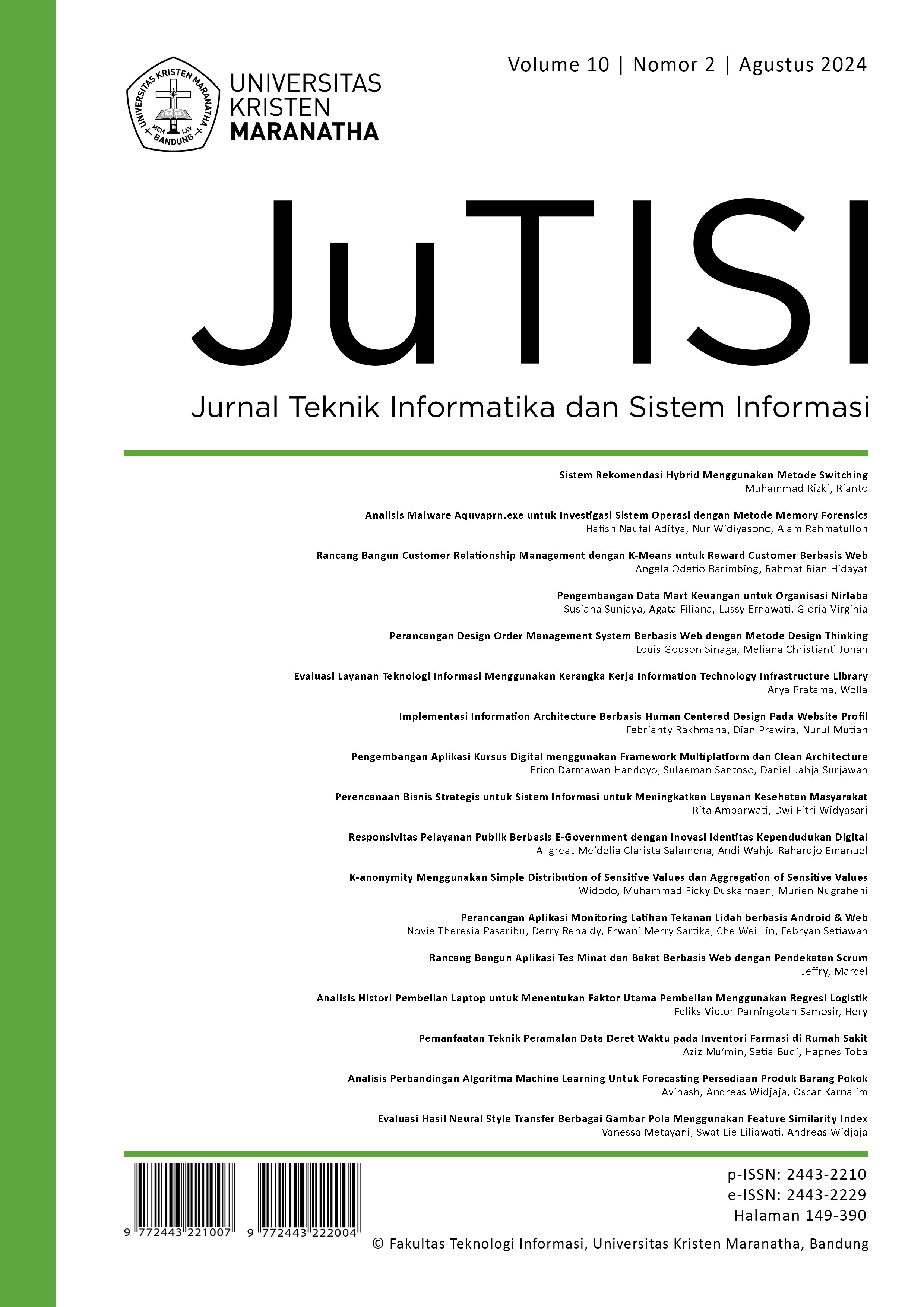Human Centered Design-Based Information Architecture Implementation On Profile Websites
Main Article Content
Abstract
In the era of globalization, the use of the internet facilitates users in obtaining information. One of the media for obtaining information is by accessing websites. Website is a part of the internet that consists of pages displaying text, images, sound, and videos. One type of website is a profile website that presents specific information about organization or educational institution. However, not all educational institutions fully utilize websites, and one example is Information Systems Program (Prodi Sistem Informasi), as their existing website only showcases a landing page and does not meet the users' information needs. Therefore, this research conducted to provide a profile website implementing Information Architecture based on Human-Centered Design to effectively convey website information, aligning with user needs. The applied Information Architecture encompasses aspects such as organization system, labeling system, navigation system, and searching system. Human-Centered Design approach includes analysis of usage context, analysis of user needs, design solution creation, and design evaluation. Design evaluation uses tree testing, resulting in a success rate of 94.71%, directness 82.65%, time spent 3 minutes 59 seconds, first click 73.75%, and destination 80.5%. Thus, the design solution's outcomes can be implemented in the form of a website, as the majority of users can find all tested categories. Subsequently, searching system test conducted through tree testing, yielding success rate of 98%, directness 96%, time spent 79% falling into fast category, first click 97%, and destination 96%. It's concluded that searching system can assist users in quickly and accurately finding the desired pages.
Downloads
Download data is not yet available.
Article Details
How to Cite
[1]
F. Rakhmana, D. Prawira, and N. Mutiah, “Human Centered Design-Based Information Architecture Implementation On Profile Websites”, JuTISI, vol. 10, no. 2, pp. 243 –, Aug. 2024.
Section
Articles

This work is licensed under a Creative Commons Attribution-NonCommercial 4.0 International License.
This is an open-access article distributed under the terms of the Creative Commons Attribution-NonCommercial 4.0 International License (https://creativecommons.org/licenses/by-nc/4.0/) which permits unrestricted non-commercial used, distribution and reproduction in any medium.
This work is licensed under a Creative Commons Attribution-NonCommercial 4.0 International License.

